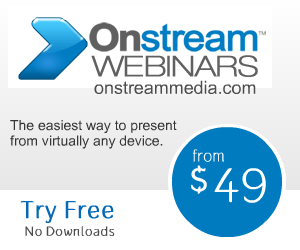 When you decide you would like to communicate to your customers via email, the first thing you need to focus on is how to get their email address. You know exactly why you need it, but consumers often worry about how you will use their email if they give it to you. Therefore, it is up to you to convince them it is in their best interest to provide you with this method of contact. You can do this through these four factors:
When you decide you would like to communicate to your customers via email, the first thing you need to focus on is how to get their email address. You know exactly why you need it, but consumers often worry about how you will use their email if they give it to you. Therefore, it is up to you to convince them it is in their best interest to provide you with this method of contact. You can do this through these four factors:
- Time Savings. If your opt-in form is easy to fill out and doesn’t take a lot of time, they are more likely to fill it out.
- Trust Building. You need your customers to fully trust you before they will give you their email address.
- Create Interest. Your website needs to create a level of interest in the people who visit it. If people aren’t interested in the content on your site, they aren’t going to sign up for your email list. This can help you narrow down your audience, but you need to make sure you are also getting your audience interested in your site.
- Provide Value. Customers want to know there is something in it for them when they sign up for your email list. Make sure you let your visitors know exactly what signing up for your email will do for them. This will allow each person to decide if it is the right option for them.
Once you are able to implement these factors into your opt-in sign-up page, you need to place that sign-up somewhere on your website. There is a fairly even difference between those companies that place their email opt-in on the top and at the bottom. If you place it on top, you are allowing your visitors to more readily see it and make use of it if they already know they want to sign up. However, if you place it at the bottom, people naturally know to look at the bottom of the page for this information. This also means it is located close to other important information, such as security, contact and privacy information so your customers can find everything they need in one place.
Types of Email Forms
As you consider your options for collecting email addresses from customers, you need to think about what type of form you will use. In general, there are three basic forms from which you can choose. Which one you select will depend on how much information you need from consumers to put them on your email list.
The first type of email request form is a single-field form. All a visitor is required to enter is his email address, nothing more. This allows you to get an email address without requiring additional information. If you aren’t targeting your emails, you don’t always need more information. This basic email request can often be the most effective.
If you need more information from your customers to create targeted email lists or to better tailor your newsletters to those who will be reading it, you need to link to a dedicated email registration form. There are two types of this form – a long and a short. When you link to this page, your customers must enter several fields of information, but you can also share more information about your newsletter on this page as well.
A short dedicated email registration form requires your users to input no more than four fields of information. The most common types of information these forms often require include an email address, name, zip code and birthdate. You can use any type of information you need for tailoring your newsletters to your readers. This form is more effective than the long form because visitors often don’t want to input a lot of information.
The long dedicated email registration form will require five or more fields. One of the most effective ways to use this type of form is to make some of the fields optional so people don’t have to feel obligated to fill out the entire form. This can allow you to gather more information from your visitors without making them feel as though they have to give it. Too much required information can quickly make your visitors turn away from your opt-in list.
How Much Information?
Whenever you ask visitors for information about themselves, you are risking visitors who will decide they don’t want to provide that information. There is a delicate balance between not getting enough information for your purposes and asking too much information, driving your customers away. It is important to ask only for what you need and what you think visitors are most likely to provide to you.
Sometimes, though, you do need to ask for more personal information, such as a birthdate. Whenever you ask for this personal information, it becomes extremely important to tell your visitors exactly why you need the information. For instance, you may offer specials for your customers on their birthday. If you let them know this, they are more likely to offer up the information. It is also important to consider if you really need the year. If not, more people will be willing to provide their birthdate without the year.
Your next question lies in where you should ask for this information. It isn’t always necessary to ask for personal information during the initial registration of an email address. Instead, you can put these fields on their email preferences or account page so they can pick and choose which information to provide to you.
What to Send
Once you have determined how much information you require from your customers, you can move on to making sure you are providing information they want to receive. This includes the right type of content, format and frequency. If you offer content that doesn’t interest your readers or you send your newsletters too often, you are going to drive your customers to unsubscribe from your list, halting communications.
Depending on your field, you may need to consider giving your customers options for what they would like to read about. On their email preferences page, they can choose the topics that interest them about your business so they only receive information that is interesting to them. Few businesses make use of this approach, making it a good choice for your newsletters.
Confirming Registration
You want your customers to know you appreciate that they have signed up for your newsletter. One of the best ways to do this is by sending them to a “thank you” page after they fill out the required information. This simple page is the perfect way to show your customers you appreciate them taking the time to provide you with an easy way to communicate with them. This is also a good time to remind them to add your email address to their acceptable list so your newsletters aren’t sent to their spam folders. You can also invite your customers to your Facebook and Twitter pages at this point, increasing your connection.
Another useful tool is sending out a confirmation email. This confirmation email could require your customers to click a link to confirm their registration or it may simply be informational to let them know they have successfully registered. This email can also serve as a welcome email, which can serve as another marketing tool and to create a level of personal connection with your customers.
Sending an email quickly after your customers have registered will help you build that trust and interest required for a successful email list. Through this email, you will let your customers know you appreciate their business, as well as reiterate what you have to offer them through your email list. This will help your customers feel appreciated and know they have made the right choice by signing up with your business.




